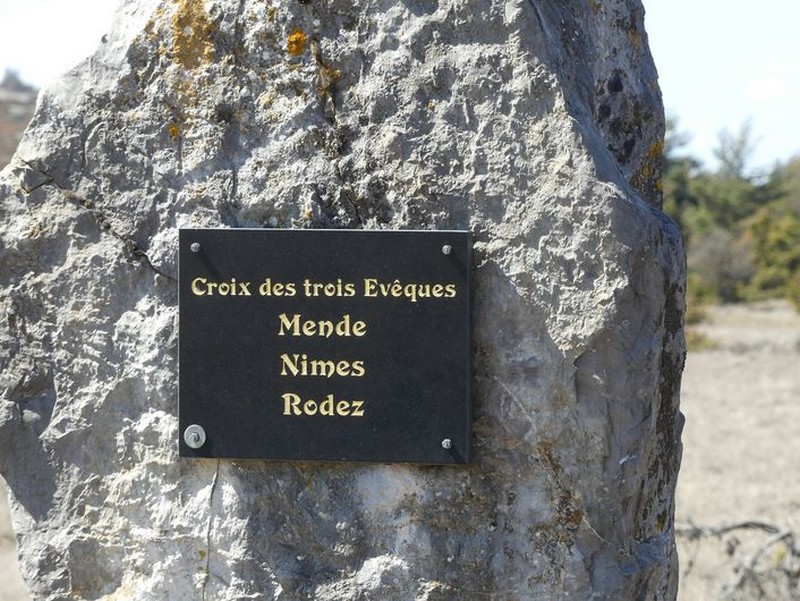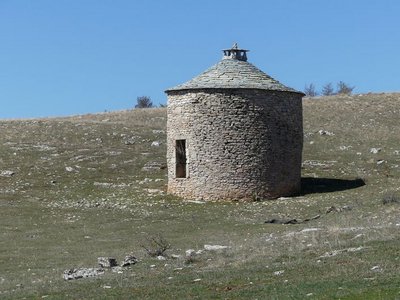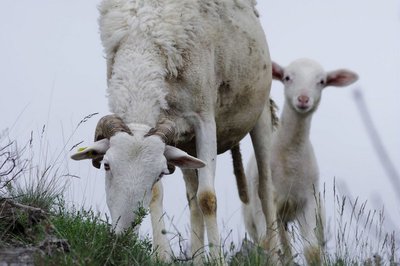
Three Bishops’ Cross trail
3 points of interest

Le pigeonnier des Mazes - Nathalie Thomas  History
HistoryThe dovecote at Les Mazes
The round building in the middle of the field, on your right as you leave the hamlet, is a dovecote. It is mentioned in 1680. Carrier pigeons were bred there. They were an excellent means of communication in the turbulent 18th century. The efficiency of these uncatchable messengers was such that, as of 1927, the use of carrier pigeons was controlled by the French state. All carrier pigeons were counted, ringed and registered, and all releases were regulated by decree!
Pigeons have an extraordinary sense of orientation and are resilient against long journeys. They will find their way back home with precision, even from several hundreds of kilometres away.
NB. You are on private land. If you decide to approach the dovecote, please make sure the sheep barrier is closed.
Anodis Verdalis - Nathalie Thomas  Flora
FloraThe Causse flora
The Grands Causses plateaux host about 2,000 plant species, almost 40% of France’s flora (which totals 4,762 species). This wealth was knowledgeably collected by René Pical, an eminent botanist at the Pharmacy faculty in Montpellier. Born in 1916, Pical lived in Lanuéjols, and over his lifetime drew up the famous Herbier du causse Noir (Causse Noir Herbarium), the second-oldest herbarium in France.
In this sea of grass, you can find the blue of aphyllanthes, Cupid’s dart or perennial flax; the grey-green of thyme and honeysuckle; the gold and silver of hawkweed or St John’s wort; the purple of sloes; the silver of quaking grasses, and so many others, such as the summer pheasant’s eye with its bright-red petals grouped around a marvellous little black heart… To see them, you have to go hiking in May, June or July.
Brebis du Causse - Emilien Herault AgricultureLivestock and other farming on the Causse
Clapas everywhere you look!
To be able to cultivate and increase the surface area of grass in pastureland, locals removed and moved huge quantities of stones, collecting them in piles: so-called clapas.
A flock of over 700 sheep covers this sector every day. The type of feed that dairy sheep eat (pasture, meadow, hay, etc.) and their lactation cycle strongly influence the fat content of their milk. In January, the fat content is 54%; as lambing approaches, it is 94%!
All the sheep’s milk here is collected and transported daily to the Roquefort cheese cellars.
Description
Signposts will guide you all along this route, as well as yellow painted waymarks. In the description below, the signposted place names and/or directions are given in bold italics between quotation marks:
From the departure-point, take the road leading to Les "Mazes hamlet".
- In the hamlet, head towards "Croix des Trois Evêques » via "Le Sabel".
- At “Croix des Trois Evêques”, turn right onto the small road for 800m.
- Take on your right the path to return to "Les Mazes". Walk along the right-hand side of the farm buildings.
- Just after the farm buildings, at the road, turn right and go through the hamlet to return to your point of departure.
- Departure : Les Mazes – Lanuéjols
- Arrival : Les Mazes – Lanuéjols
- Towns crossed : Lanuéjols, Meyrueis, and Veyreau
Forecast
Altimetric profile
Recommandations
Information desks
Tourism & national parc'house
Col de la Serreyrède, 30570 Val d'Aigoual
The Maison de l'Aigoual houses the tourism office Mont Aigoual Causses Cévennes and the Maison du Parc national. This visitor centre provides information on and raises awareness of the Cévennes National Park, its sites and events as well as the rules that must be observed in the National Park's central zone.
On site: changing exhibitions, video projections, Festival Nature events and shop Open year-round
Access and parking
Parking :
Calculateur d'itinéraire Lio
Utilisez le calculateur liO pour organiser votre trajet en région Occitanie.
Autres régions
Calculez votre itinéraire en Auvergne Rhône Alpes sur Oùra
Biodiversité autour de l'itinéraire
Source

Report a problem or an error
If you have found an error on this page or if you have noticed any problems during your hike, please report them to us here:

